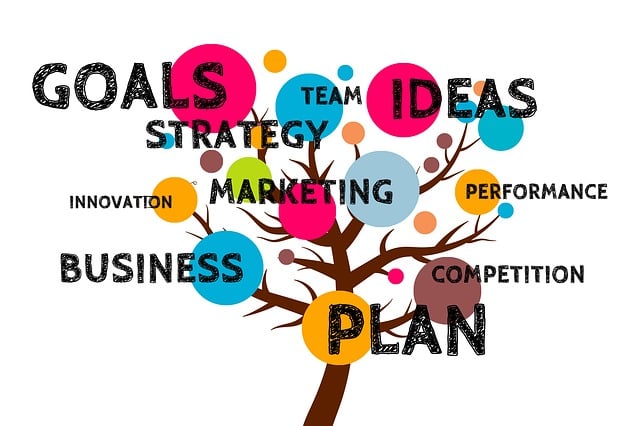Imagine driving without a GPS. You might eventually reach your destination, but you’ll waste time, fuel, and patience along the way. The same goes for running marketing campaigns without data. A Data-Driven Marketing Plan acts as your GPS—it guides your dealership toward better results, smarter decisions, and faster growth.
For growth marketing teams at multi-location dealerships, the challenge isn’t just reaching customers—it’s reaching the right customers, in the right way, and at the right time. That’s exactly where data comes in.
In this article, we’ll explore why your auto dealership needs a Data-Driven Marketing Plan, how it can transform your strategy, and the practical steps to implement it effectively.
Understanding a Data-Driven Marketing Plan
A Data-Driven Marketing Plan is a strategy built around facts and insights instead of guesswork. It means using customer demographics, behaviors, purchase history, and engagement data to make smarter marketing choices. Instead of hoping your message sticks, you know where to aim and how to deliver it.
Why Traditional Marketing Falls Short
In the past, dealerships relied on billboards, newspaper ads, and radio spots. While these methods had some impact, they lacked precision. They were like fishing in the ocean without knowing if there were fish nearby. Today, customers demand personalized experiences, and without data, dealerships risk wasting money on broad campaigns that don’t convert.
The Power of Data in the Automotive Industry
Data is transforming the automotive world. From tracking buyer journeys online to analyzing dealership foot traffic, data allows you to spot trends, predict customer needs, and stay ahead of competitors. For multi-location dealerships, data ensures consistency across stores while tailoring strategies to local markets.
Key Benefits of a Data-Driven Marketing Plan
Improved Targeting: Reach the right audience with the right offer.
Better ROI: Spend money on what works, not what doesn’t.
Customer Retention: Keep existing buyers engaged with personalized service.
Competitive Edge: Outperform competitors who still rely on guesswork.
Collecting the Right Customer Data
Not all data is valuable. Focus on:
Demographics: Age, income, location.
Behavioral Data: Website visits, email engagement, service history.
Transactional Data: Past purchases, financing details.
With CRM systems and analytics tools, dealerships can gather and organize this data effectively.
Segmenting Your Audience for Maximum Impact
Think of segmentation as organizing your garage. You don’t keep wrenches mixed with car wax—it’s the same with customers. Group buyers into segments like first-time car buyers, luxury seekers, or loyal service customers. This makes campaigns more relevant and impactful.
Personalization: Turning Data Into Relationships
Data allows you to speak directly to a customer’s needs. Imagine sending a reminder for an oil change right when their vehicle is due, or offering a special trade-in deal tailored to their past purchase. That’s personalization—and it builds loyalty.
Multi-Location Dealership Challenges and Data Solutions
Operating multiple locations comes with challenges like inconsistent branding or duplicated efforts. A Data-Driven Marketing Plan ensures uniform messaging while adapting to local market differences. Centralized data platforms help you manage performance across all locations.
Leveraging Predictive Analytics for Smarter Decisions
Predictive analytics uses past data to forecast future actions. For example, you might identify that customers who bought a car three years ago are likely ready for an upgrade. This insight lets you create targeted campaigns before they even start shopping.
Integrating Digital and Offline Data
Customers don’t live only online or offline—they live in both. Integrating website analytics, social media engagement, showroom visits, and service department interactions gives you a 360° view of your customer.
Measuring ROI with Data Accuracy
The beauty of data is measurability. Unlike traditional ads, digital campaigns tell you exactly what’s working. With a Data-Driven Marketing Plan, you can track conversions, customer acquisition costs, and lifetime value, ensuring every dollar spent contributes to growth.
Real-World Examples of Data-Driven Dealership Success
Many dealerships have already reaped the rewards:
Dealership A: Increased leads by 40% through personalized email campaigns.
Dealership B: Reduced marketing spend by 25% by focusing only on proven channels.
Dealership C: Improved customer retention by 35% using service data reminders.
Steps to Building Your Own Data-Driven Marketing Plan
Define Your Goals – Sales growth, retention, or brand awareness.
Collect Data – Use CRM, web analytics, and service records.
Analyze & Segment – Group customers meaningfully.
Create Campaigns – Personalize based on data insights.
Measure Results – Track KPIs and refine strategies.

Marketing Plan
Tools and Technologies Every Dealership Should Use
CRM Systems – Manage and segment customer relationships.
Analytics Platforms – Google Analytics, Power BI, or Tableau.
Marketing Automation – HubSpot, Salesforce, or dealership-specific tools.
AI and Predictive Tools – Anticipate customer needs.
Common Mistakes to Avoid in Data-Driven Marketing
Collecting Too Much Data: Focus on quality over quantity.
Ignoring Privacy Regulations: Always respect customer consent.
Not Updating Strategies: Data changes, so should your plan.
Failure to Train Staff: Tools are useless if your team can’t use them.
The Future of Automotive Marketing with Data
The future is clear—data will continue to dominate. AI-driven personalization, predictive customer journeys, and real-time engagement will become the norm. Dealerships that embrace data today will lead tomorrow.
Conclusion
A Data-Driven Marketing Plan isn’t just a buzzword—it’s the foundation for success in today’s competitive automotive market. By using data to guide decisions, dealerships can reduce wasted spend, improve targeting, and build stronger customer relationships.
If your dealership isn’t already leveraging data, now is the time to start. After all, why drive blind when you can have a GPS for growth?


Recent Comments